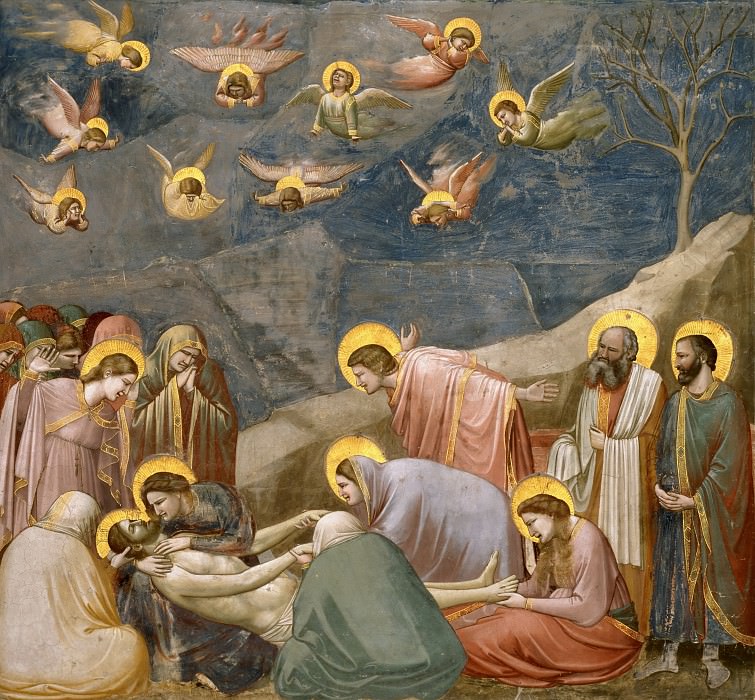36. The Mourning of Christ Giotto di Bondone (1266-1337)
Giotto di Bondone – 36. The Mourning of Christ
Edit attribution
Download full size: 4075×3782 px (5,6 Mb)
Painter: Giotto di Bondone
The frescoes by the Italian painter and architect Giotto marked the birth of an entirely different page in the narrative of artistic history. Until his heyday, sculptors in Italy had followed the rules of medieval and Roman antique painting traditions. Giotto’s painting breaks the link with the painting techniques of the past to the point of completely refusing to follow its laws. The Florentines believe that the illustrious master has crossed the threshold into the newest era of art, in which they are undoubtedly right. In the three-year period of the Early Renaissance, from 1302, the artist worked to refurbish the interior walls of a chapel in Padua.
Description of Giotto di Bondone’s Mourning of Christ fresco
The frescoes by the Italian painter and architect Giotto marked the birth of an entirely different page in the narrative of artistic history. Until his heyday, sculptors in Italy had followed the rules of medieval and Roman antique painting traditions.
Giotto’s painting breaks the link with the painting techniques of the past to the point of completely refusing to follow its laws. The Florentines believe that the illustrious master has crossed the threshold into the newest era of art, in which they are undoubtedly right.
In the three-year period of the Early Renaissance, from 1302, the artist worked to refurbish the interior walls of a chapel in Padua. His work was extremely productive - 38 religious scenes from the New Testament. Giotto’s famous panel is the central fresco The Mourning of Christ.
The image focuses on the faces of the murdered Christ and the Mother. It is to this center of greatest emotional tension compositionally directed all the objects and characters of the canvas. The sloping surface of the rock seems to point with an arrow at the Holy Family. The gazes of the heavenly and earthly participants of the mournful scene are all visually and emotionally immersed in the scene.
Mary Magdalene weeps at the feet of the dead Christ, other female figures wring their hands in sorrow, holy righteous men patiently survive the irreparable loss, stately stocky figures with their backs to the viewer have their heads covered in capes as a sign of mourning, and the angels flying golden and white are killed with grief in a human way.
The overall emotional background of The Mourning of Christ is an ingenious artistic device of Giotto. All the participants of the event are involved in what is happening, and the position of their bodies, the detailed folds of their clothes, the ratio of darkening and illuminated areas create an incredibly realistic spatial depth of the painting.
Кому понравилось
Пожалуйста, подождите
На эту операцию может потребоваться несколько секунд.
Информация появится в новом окне,
если открытие новых окон не запрещено в настройках вашего браузера.
You need to login
Для работы с коллекциями – пожалуйста, войдите в аккаунт (open in new window).




















You cannot comment Why?
The subtexts of the painting are deeply religious and emotional. It portrays the profound grief of Christs followers and the divine sorrow for his sacrifice. The weeping angels symbolize the sorrow of the heavens, emphasizing the cosmic significance of Christs death. The work explores themes of love, loss, sacrifice, and redemption, inviting viewers to contemplate the immense emotional weight of this event and its implications for salvation. The intimate portrayal of Marys grief serves as a powerful reminder of a mothers suffering and the deep human connection to Christ.